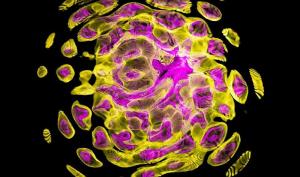The 16 types of energy (and how they work)
Energy is defined as the ability of bodies to generate work. Although it is a very basic way of understanding it, it is a definition that gives us an overview of what energy is and how broad it is.
The sources that produce useful energy for human beings are very diverse. All of them can even fulfill specific functions, such as supplying heat and light to a city or bringing heat to homes.
For this reason it is important to know and identify the types of energy that exist and how they work.
Know the 16 most important types of energy that exist
Energy comes in various forms and has the ability to transform. The amount of energy a body has can be measured by the work it can do. This energy can appear in various forms in the world and nature, and be used by humans for very different purposes.
For this reason it is important to know that there are different types of energy, each one works differently and is used for different purposes. Each of them is immersed in our life and surely we make use of it without ever considering how it is obtained and how it reaches our home or our workplace.
1. Electric power
Electrical energy is perhaps one of the types of energy with which we are most familiar. When there is a difference in power between two points, an electric current is produced, this current is channeled through conductive materials that generate work. This electrical energy is what reaches our homes to turn on electrical appliances.
2. Mechanical energy
Mechanical energy refers to the ability of bodies to do work. It is a "rudimentary" type of energy, it combines the potential, kinetic and elastic energy that certain bodies can have or that can be added to generate their own mechanical energy. It refers to the movement and position of an object.
3. Kinetic energy
Kinetic energy refers to the potential that a body has in motion. It is actually a type of mechanical energy that only applies to bodies that can have movement. The amount of kinetic energy they generate depends on the mass and speed they can reach. This energy can be transferred when one body hits another and sets it in motion.
4. Potential energy
Another type of mechanical energy is potential energy. It refers to the amount of energy that a body or a system can store while at rest. Most of the time it is subject to the kinetic energy that is applied. A very clear example is the movement of a swing: the person is pushed on the swing that produces kinetic energy and then at its most high stops and then potential energy is generated while up in suspension, then released again to generate more energy kinetics.
5. Solar energy
Solar energy, as its name implies, comes from radiation from the sun. This radiation is emitted through heat. It is a renewable or green energy, since its absorption and use does not imply polluting elements for the earth. By means of conductive materials of solar energy, the sun's radiation is captured to transform it into photovoltaic, photothermic or thermoelectric energy.
6. Hydraulic energy
Hydropower is another type of renewable energy. This type of energy is actually the use of the kinetic and potential energy that the water current contains, either in its form natural in rivers, waterfalls or waterfalls, or through human intervention to create structures that potentiate their kinetic energy.
7. Wind power
The use of the movement of the wind is wind energy. Air currents generate kinetic energy, these are used by generating movement in large windmills, which in turn generate electrical energy. It is a way to generate this type of energy in a more sustainable way.
8. Acoustic energy
Acoustic or sound energy is produced by the vibration of objects. Certain objects have the property of being able to vibrate when an external force is applied to them. This vibration in turn generates vibrations in the air that emit noise, this is due to the generation of electrical impulses that the brain interprets with sounds.
9. Thermal energy
Thermal energy refers to the energy that is released in the form of heat. Objects can store and transmit a certain amount of temperature. The higher temperatures they register, their molecules are moving more and their thermal energy is higher. Thermal energy can be transformed into electrical energy by means of a motor or a thermoelectric power plant.
10. Chemical energy
Chemical energy is the energy that is stored in food and fuel. To release this energy a chemical reaction is required and heat is commonly produced (reaction exothermic) and when chemical energy is released from a body or system, it becomes a substance new.
11. Light energy
Light energy is the energy transported by light. It is common to confuse it with radiant energy, however they are different things. Light energy has the ability to interact with materials in different ways. For example, it manages to remove electrons from metals, which is why it is used to melt metals, among other uses.
12. Gravitational energy
Gravitational energy is a type of potential energy. Gravitational energy depends on mass, height, reference point, and the force of gravity. Each object has an amount of potential energy, but its gravitational energy determines how high and for how long the object remains without falling.
13. Nuclear energy
Nuclear energy is released after a nuclear reaction. This means that by the division or union of the heavy or light atomic nuclei, reactions take place where a large amount of energy is released. This is because the mass of the particles have the ability to convert directly into energy.
14. Radiant energy
Radiant energy is also known as electromagnetic energy. This energy is present in radio waves, ultraviolet rays, visible light, infrared rays or microwaves, among others. This radiant energy has the peculiarity that it propagates in a vacuum and is transmitted by means of photons.
15. Bio-vegetable energy
Bio-vegetable energy refers to the energy obtained by the reaction of plant elements. The way to generate this reaction is only by combustion, and the most common is that it is obtained from the burning of wood, animal and human excrement or other types of vegetables. This reaction gives off methane, which is used as a form of energy.
16. Geothermal energy
Another type of energy is geothermal energy. This energy refers to that which can be obtained from the use of heat from the earth's geothermal systems. It is considered a renewable energy. Geysers and hot springs are an example of this. This type of energy can be a way to substitute energy from fossil fuels.
Bibliographic references
- Schmidt-Rohr, K (2015). Why Combustions Are Always Exothermic, Yielding About 418 kJ per Mole of O2. J. Chem. Educ. 92 (12): 2094–2099.
- Smith, Crosbie (1998). The Science of Energy - a Cultural History of Energy Physics in Victorian Britain. The University of Chicago Press.



